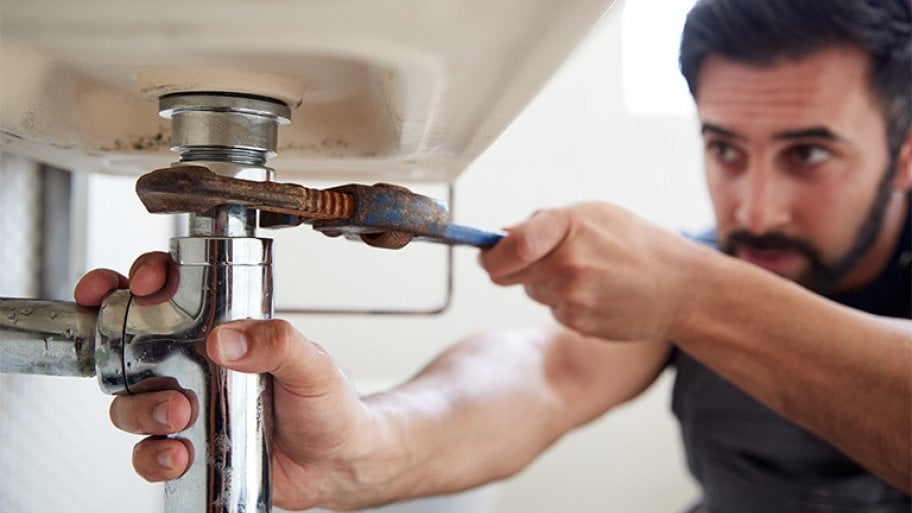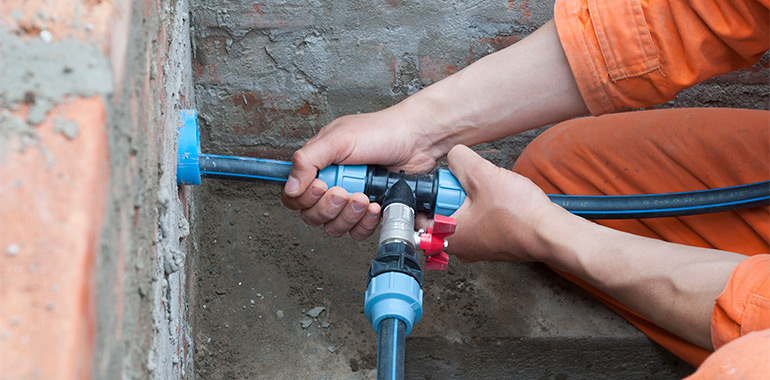Finding and Repairing Bothersome Plumbing in Your Dwelling
Finding and Repairing Bothersome Plumbing in Your Dwelling
Blog Article
We've found this article on Diagnose Unwanted Plumbing Noises listed below on the web and thought it made perfect sense to discuss it with you on my blog.

To diagnose loud plumbing, it is very important to figure out first whether the undesirable noises occur on the system's inlet side-in various other words, when water is turned on-or on the drainpipe side. Noises on the inlet side have actually varied reasons: excessive water stress, worn valve and tap components, poorly linked pumps or other devices, incorrectly positioned pipeline fasteners, and also plumbing runs having way too many limited bends or various other limitations. Noises on the drain side typically come from poor location or, as with some inlet side sound, a format having limited bends.
Hissing
Hissing sound that takes place when a tap is opened a little usually signals excessive water pressure. Consult your regional water company if you suspect this problem; it will have the ability to inform you the water stress in your area as well as can install a pressurereducing shutoff on the incoming water system pipeline if required.
Thudding
Thudding noise, typically accompanied by shuddering pipelines, when a faucet or device valve is switched off is a problem called water hammer. The sound and vibration are triggered by the resounding wave of stress in the water, which all of a sudden has no location to go. Sometimes opening a valve that discharges water promptly right into an area of piping containing a restriction, elbow joint, or tee fitting can produce the same condition.
Water hammer can generally be healed by installing fittings called air chambers or shock absorbers in the plumbing to which the issue valves or taps are linked. These devices allow the shock wave developed by the halted flow of water to dissipate in the air they include, which (unlike water) is compressible.
Older plumbing systems might have brief vertical sections of capped pipeline behind walls on faucet competes the same function; these can ultimately loaded with water, lowering or destroying their efficiency. The cure is to drain the water system entirely by shutting down the main water supply valve and opening all taps. After that open up the major supply valve as well as shut the faucets one by one, beginning with the faucet nearest the shutoff as well as finishing with the one farthest away.
Babbling or Shrieking
Extreme chattering or shrilling that takes place when a shutoff or faucet is activated, which normally goes away when the fitting is opened completely, signals loose or faulty internal parts. The service is to replace the shutoff or tap with a brand-new one.
Pumps and also devices such as washing machines as well as dishwashing machines can transfer electric motor noise to pipes if they are incorrectly attached. Link such things to plumbing with plastic or rubber hoses-never rigid pipe-to isolate them.
Various Other Inlet Side Noises
Creaking, squealing, scratching, snapping, as well as touching typically are brought on by the expansion or tightening of pipelines, normally copper ones providing warm water. The audios happen as the pipes slide against loose bolts or strike nearby house framing. You can commonly identify the area of the issue if the pipelines are exposed; simply adhere to the audio when the pipes are making sounds. Most likely you will uncover a loose pipe wall mount or an area where pipelines exist so near flooring joists or other framing pieces that they clatter against them. Connecting foam pipe insulation around the pipes at the point of contact need to remedy the issue. Be sure straps and also wall mounts are protected and also supply appropriate support. Where possible, pipe fasteners must be attached to large structural components such as structure walls rather than to mounting; doing so lessens the transmission of resonances from plumbing to surface areas that can amplify as well as move them. If affixing bolts to framework is inescapable, cover pipelines with insulation or various other resistant product where they speak to bolts, and also sandwich the ends of brand-new fasteners in between rubber washing machines when installing them.
Dealing with plumbing runs that struggle with flow-restricting tight or various bends is a last resort that needs to be embarked on only after speaking with a proficient plumbing specialist. However, this scenario is relatively common in older homes that might not have actually been developed with indoor plumbing or that have seen several remodels, specifically by beginners.
Drainpipe Noise
On the drain side of plumbing, the chief goals are to eliminate surfaces that can be struck by dropping or hurrying water and to insulate pipes to include inescapable audios.
In new building, bathtubs, shower stalls, toilets, as well as wallmounted sinks and also containers must be set on or against resilient underlayments to minimize the transmission of audio through them. Water-saving toilets and taps are less loud than conventional designs; install them rather than older types even if codes in your location still allow utilizing older components.
Drainpipes that do not run up and down to the cellar or that branch into straight pipeline runs supported at floor joists or various other mounting existing particularly problematic sound problems. Such pipelines are large sufficient to radiate significant resonance; they likewise lug considerable amounts of water, which makes the situation worse. In brand-new building, define cast-iron soil pipelines (the large pipelines that drain pipes bathrooms) if you can manage them. Their enormity includes a lot of the sound made by water travelling through them. Likewise, stay clear of transmitting drains in walls shown to bedrooms as well as spaces where individuals collect. Wall surfaces having drains should be soundproofed as was defined earlier, using double panels of sound-insulating fiberboard and wallboard. Pipelines themselves can be wrapped with unique fiberglass insulation created the purpose; such pipes have an invulnerable plastic skin (sometimes having lead). Outcomes are not always satisfactory.
WHY IS MY PLUMBING MAKING SO MUCH NOISE?
This noise indeed sounds like someone is banging a hammer against your pipes! It happens when a faucet is opened, allowed to run for a bit, then quickly shut — causing the rushing water to slam against the shut-off valve.
To remedy this, you’ll need to check and refill your air chamber. Air chambers are filled with — you guessed it — air and help absorb the shock of moving water (that comes to a sudden stop). Over time, these chambers can fill with water, making them less effective.
You’ll want to turn off your home’s water supply, then open ALL faucets (from the bathroom sink to outdoor hose bib) to drain your pipes. Then, turn the water back on and hopefully the noise stops! If you’re still hearing the sound, give us a call to examine further.
Whistles
Whistling sounds can be frustrating, as sometimes the source isn’t easily identified. However, if you can pinpoint which faucet or valve that may be the cause, you’ll likely encounter a worn gasket or washer — an easy fix if you replace the worn parts!Whistling sounds from elsewhere can mean a number of things — from high water pressure to mineral deposits. Your best plan of attack here is to give our plumbing experts a call. We’ll be able to determine where the noise is coming from and what the cause may be, then recommend an effective fix!
Cracks or Ticks
Cracking or ticking typically comes from hot water going through cold, copper pipes. This causes the copper to expand resulting in a cracking or ticking sound. Once the pipes stop expanding, the noise should stop as well.
Pro tip: you may want to lower the temperature of your water heater to see if that helps lessen the sound, or wrapping the pipe in insulation can also help muffle the noise.
Bangs
Bangs typically come from water pressure that’s too high. To test for high water pressure, get a pressure gauge and attach it to your faucet. Water pressure should be no higher than 80 psi (pounds per square inch) and also no lower than 40 psi. If you find a number greater than 80 psi, then you’ve found your problem!
Next step is to give us a call in order to install a pressure regulator. Trust us, you don’t want to wait to resolve this issue. Not only is the sound annoying, but high water pressure can be destructive to your home — including damaging certain appliances, like your washer and dishwasher.
Dripping
You might be accustom to the slow quiet drip your kitchen faucet makes. You might have even tuned out your bathroom sink dripping and drabbing all day long — but it’s time to find its cause.
A slow drip could signify a variety of easy to fix issues, such as a worn out O ring, or loose part. And by ignoring the drip, you could be wasting up to 2,000 gallons of water a year! So start conserving water — get it looked at ASAP.
https://www.pwessig.com/blog/2018/december/why-is-my-plumbing-making-so-much-noise-/

I came across that piece about Why Do My Pipes Make Noises while doing a search on the web. So long as you liked our article kindly do not forget to pass it around. We recognize the value of reading our article about Diagnose Unwanted Plumbing Noises.
Need urgent help? Reach. Report this page